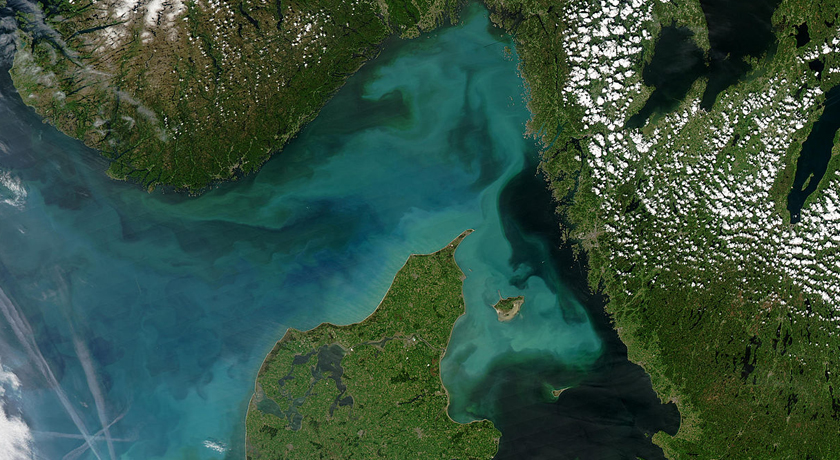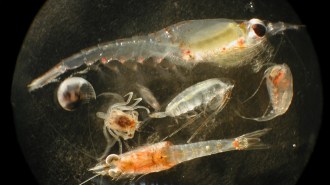Viruses might tame some algal blooms

Satellite images can explain the intimate life details of algal blooms, including their demise by viruses. Blooms appear as bright blue and green swirls in this image.
Jeff Schmaltz, MODIS Rapid Response Team, NASA/GSFC




